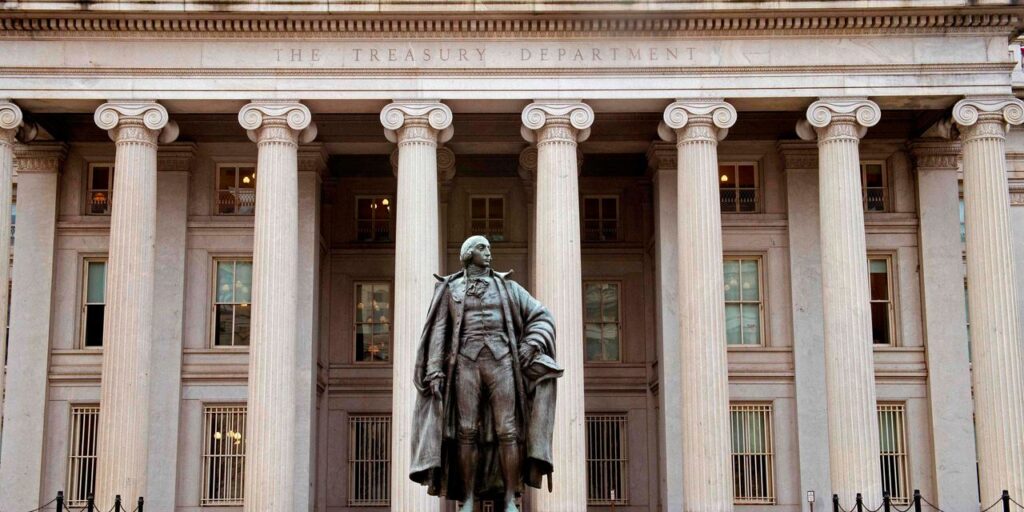The numbers: The U.S. budget deficit quadrupled to $240 billion in May from a year earlier, fueled by higher government spending and fewer taxes collected.
For the first eight months of the current fiscal year, the deficit totaled $1.16 trillion, compared with $1.38 trillion in the same period last year.
Key details: Government spending jumped by 20% to $548 billion, compared with $455 billion in the same month one year ago.
The increase in spending stemmed mostly from entitlement programs such as Medicare and Social Security.
Higher interest rates on the government’s rising level of debt was another big contributor.
So was an increase in spending by the Federal Deposit Insurance Corp. after several bank failures or takeovers earlier this year. The FDIC has said most of the money will be recouped through sales of bank assets and higher industry fees.
The amount of taxes collected last month fell by about 21%, to $307.5 billion from a year earlier.
Part of the decline reflected a softer economy. Taxes were also higher in May 2022 because the IRS processed returns in April of last year more slowly than usual.
The current fiscal year began in October and ends on Sept. 30, 2023.
Big picture: U.S. deficits soared during the pandemic and are expected to keep rising through the next decade despite a recent budget deal between Democrats and Republicans to stem the tide of red ink.
The Congressional Budget Office projects the annual deficit will rise from an estimated $1.4 trillion in the current fiscal year to $2.9 trillion by 2033.
There doesn’t appear to be a lot of appetite in Washington to cut spending, raise taxes or both to address the expanding national debt.
“Today’s Treasury numbers serve as a stark reminder that our fiscal challenges are far from over,” said Maya MacGuineas, president of the nonpartisan Committee for a Responsible Federal Budget.
Read the full article here











